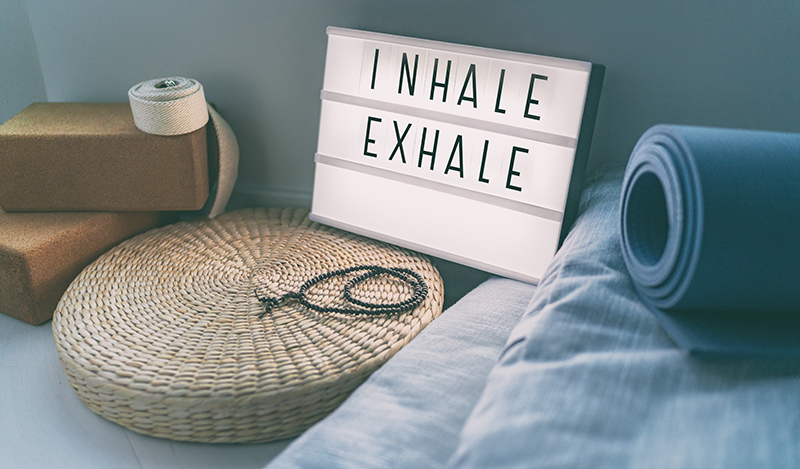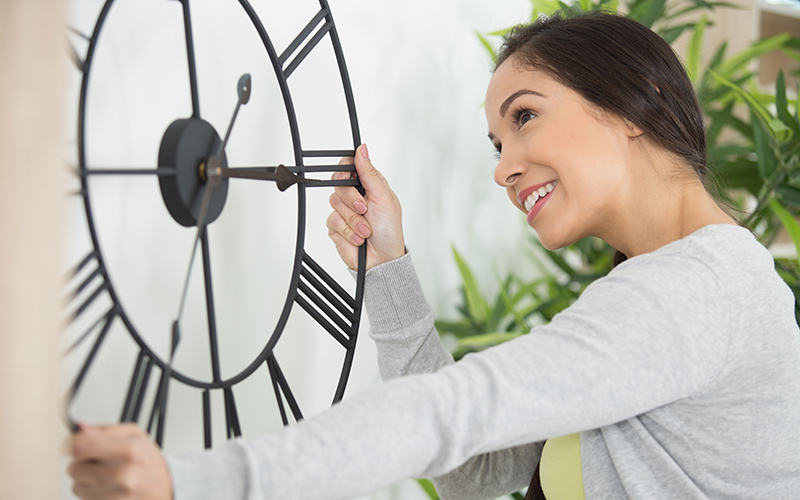During daylight savings time, people can lose much sleep as their bodies haven’t attuned themselves to the adjusted time. Luckily, you can adjust to daylight savings time and protect your time of rest in several ways.
How to Adjust to Daylight Savings Time
It’s that time of the year when the time changes for everyone affected by daylight savings. Unfortunately, while changing our clocks is easy enough, it’s not as easy to adjust our bodies. If you’re having trouble adjusting to the change, here are some things you can do to adapt your body.
1. Adjust Your Body Gradually
How do you handle daylight savings time? If you’re still not used to the time change and your schedule is all messed up, consider adjusting your schedule gradually. Try timing activities and meals 15 minutes ahead week by week.
If you’re used to eating at 7:00 p.m. and have been eating at 8:00 p.m., consider eating dinner at 7:45 p.m. for one week. The following week, dial it back another 15 minutes until you resume your previous schedule. This can prevent you from eating or sleeping too late at night.
Adjusting your mealtime is crucial because eating too close to bedtime is not recommended. Going to bed on a full stomach can make it hard to sleep. Your body is more focused on digestion than on sleeping, potentially causing sleep deprivation.
2. Stick to Your Sleep Schedule at First
How long does it take your body to adjust to daylight savings time? Typically, it takes around 5-7 days to get back on track. However, you can lag behind on your bedtime even if everything else has resumed its normal schedule.
If this is the case with you, remember that adjusting your sleep schedule is vital to your health. Do you usually sleep at eleven? Go to bed when the clock strikes 11 p.m. even if it feels like 10 p.m. Continue to do this until your body adjusts. Like the previous tip, you can adjust your sleep schedule gradually in 15-minute increments. However, we do recommend resuming your sleep schedule as fast as possible.
This will do wonders for your body and prevent you from having restless nights. Everything else in the world — including school and work hours — have already adjusted. Your sleep should follow suit, or else you might not have enough energy to face the day.
3. Use Relaxation Techniques

Sleep is vital for the overall health. It’s especially important for women as they need more sleep than men. That’s why we recommend doing everything possible to get good sleep and adjust your sleep schedule. This includes everything from getting the ideal mattress to using relaxation techniques to get some rest.
Consider doing deep breathing exercises or mindful meditation if you opt for the latter. These are also useful when you suddenly wake up in the middle of the night. They can help you fall back asleep much faster.
4. Create a Conducive Sleeping Environment
It’s harder to sleep in a bright, noisy bedroom. Make sure to create an environment that’s conducive to sleep. This is a great way to adjust to daylight savings time as it signals to your body that it’s time for bed, despite the earlier time.
How do you create a conducive sleep environment? Firstly, adopt a stable nighttime routine to get ready for bed. Brush your teeth, apply your skincare products, and grab a book to read every night to condition your mind. Put away all your electronics 30 minutes before going to bed. Moreover, dim the lights and block unwanted noise as much as possible. You can also use earplugs and a sleep mask for this.
Finally, remember to go to sleep at the same time every night, whether it’s a weekend or a weekday. This can help your body sleep on time each night without missing a beat.
5. Take Naps

It’s normal to feel a little groggy when you’re sleep-deprived. After all, adjusting to daylight savings can be difficult because changing your body clock is not always easy. If you’re feeling tired, consider taking a 20-minute power nap during the day. This can help you stay energized and mentally present during daytime activities.
6. Do Not Press the Snooze Button
It can be tempting to hit the snooze button when you haven’t adjusted to daylight savings time. However tempting as it may be, we don’t recommend it. Hitting the snooze button adversely affects your ability to wake up.
If you’re generally tired in the morning, consider setting an alarm 10 minutes later than your standard alarm. This should help you catch extra Zs without disrupting your sleep pattern. It can also help to place your phone or alarm farther away from the bed. Doing so can force you to get up, making you more likely to wake up.
7. Expose Yourself to the Sun

Daylight savings means longer days, which means more opportunities to soak up the sun. Take advantage of this by going for an outdoor jog or doing outdoor activities. These activities give you extra vitamin D and more energy.
Moreover, going outdoors should boost your mental health and support your circadian rhythm. Your body will be signaled it’s time to stay awake when exposed to sunlight. Once the nighttime comes, your body will naturally understand it’s time for bed.
8. Eat a Healthy Diet
Proper sleep isn’t just about going to bed on time — proper nutrition is also essential to getting a good night’s rest. Make sure to eat a balanced diet with lots of veggies and fruits to give you the necessary nutrients. Avoid consuming too many caffeinated beverages like sodas, coffee, and tea. Moreover, it’s best to limit the consumption of spicy and heavy food during dinner.
How to Adjust to the End of Daylight Savings Time
Daylight savings time will eventually end. As such, we’ll have to adjust to the time change again. Here’s how to better adapt your body and schedule.
1. Change the Clocks Ahead of Time

It’s essential to adjust to the regular time the moment it comes. Our phones and laptops may automatically change the time when daylight savings ends. However, if you want to be sure you’re on time for all your meetings and appointments, setting back clocks at home is also vital. Make sure to change each one the night before daylight savings ends. Remember to adjust not only your wall clocks but also the clocks on your appliances and cars.
2. Adjust Your Sleep Schedule Gradually
The end of daylight savings time might not be as disruptive to your sleeping patterns, but it could still affect your circadian rhythm. If you’re not sleep-deprived, you can go to bed a bit later a week before the clocks change back. This should help you wake up a bit later as well.
You can also gradually adjust your bedtime in 15 to 20-minute increments for a less abrupt transition. Do this for a few days before daylight savings falls back.
3. Use the Opportunity to Get More Sleep
The end of daylight savings time can be a blessing for sleep-deprived folks. In this case, it’s best to go to sleep at the same time you used to during daylight savings time. Just wake up one hour later to get an extra hour of sleep. It should help you feel more energized as you sleep enough at night.
4. Block Out the Light
Many people wake up too early when the clocks fall back. If the sunrise wakes you up earlier than scheduled, consider using blackout curtains or a sleep mask to block out the light.
Slowly But Surely
Adjusting to daylight savings time isn’t easy, even when the clocks have already changed. Remember these tips to help your body adjust. If you do, you can get some of that much-needed sleep.
You Can Also Read These:
- Volunteer Success: What’s The Secret?
- How To Set Goals In Life This 2024
- Spring Maintenance Checklist: What To Do This Season




